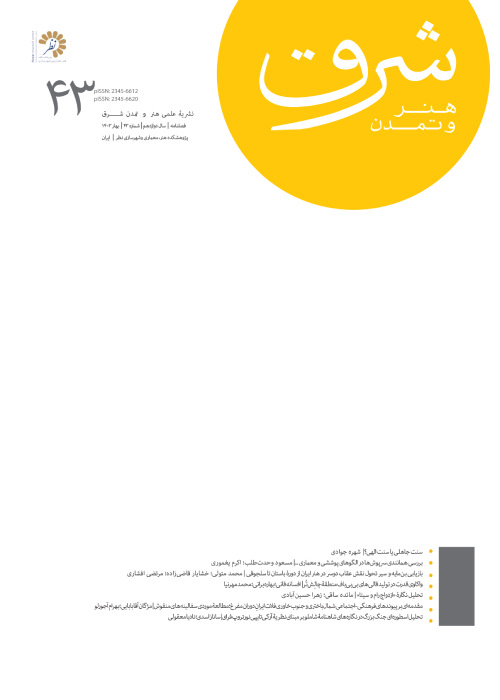The Role of Letters and Calligraphy in Public Art (Comparison of Three Examples of Iranian Public Letter-Based Art with Three Non-Iranian Examples Over the Decade)
This study aims at analyzing the effect of calligraphy on providing a relationship between the audience and the work in the public art context. The relationship between artistic work and audience is one of the most underlying issues in postmodern art, which can be achieved in public art more than in other types of art. Accordingly, the type of relationship caused by using letters varies in public art. This is because the letters play a cultural role as a visual element in history. To compare the effect of using letters and calligraphy in public art, three Iranian and three foreign letter-based works were compared. The study employs the descriptive method as a subset of qualitative studies.This study aims at explaining the cultural significance and nature of letters and calligraphy in the new and postmodern arts of Iran, and its importance in communicating with the audiences in public arts.Which indicators can result in an effective audience-work relationship by using letters and calligraphy in public artworks? using letters and calligraphy in public arts can result in a better audience-art interaction in addition to its communicative function in the field of transferring the concept if it is used based on the identity background of audiences.In the studied examples, two works of Al Seyed and Parviz Tanavoli have been recognized as successful works in the field of public art. The entanglement of these works with the urban context, and the relationship of letters with a cultural context of the audience are the most effective factors in the success of letter-based works. According to obtained results, the following characteristics can be counted for public art, which can communicate with audiences compared to other types of postmodern arts: public display, public audience availability, influencing the masses, inviting the audience to participate, creating a sense of joy and happiness, beautifying the urban space, better conveying the message, and stability of information. Also, if the proportion of language and calligraphy with the culture and identity of audiences is considered in public art that used letters and calligraphy as a visual factor, the most underlying aspect of communicating audiences in these works can be realized. Hence, one can make sure of effective audience-art interaction.
- حق عضویت دریافتی صرف حمایت از نشریات عضو و نگهداری، تکمیل و توسعه مگیران میشود.
- پرداخت حق اشتراک و دانلود مقالات اجازه بازنشر آن در سایر رسانههای چاپی و دیجیتال را به کاربر نمیدهد.


